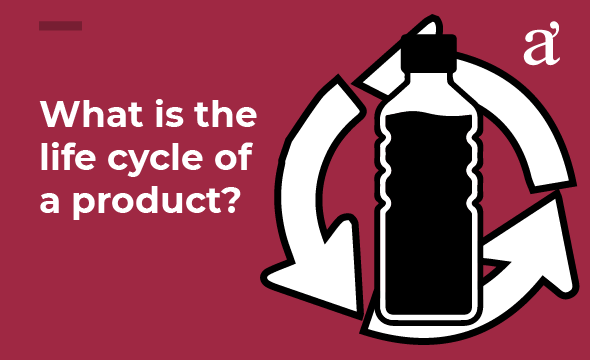What is the life cycle of a product?

Nowadays, the market is constantly changing within the business world, undoubtedly this is fundamental to keep in mind, for the success of any product.
Thanks to these constant changes, companies must always be open-eyed, since products have a limited life, and they undergo significant evolution. These changes go from launch to retirement, and go through different stages and varying in the sales process.
What is the life cycle of a product?
In the marketing world, this aspect is known as the stages that a product must go through, starting at its introduction to the market until its withdrawal.
The life cycle of a product originates from the analogy between human evolution and products, both must go through different processes and stages throughout their existence.
From the moment a living being procreates, a new one-way cycle begins, passing through birth, adolescence, adulthood, old age, and death. A human being must undergo these stages to fulfill his life cycle correctly. The same happens with a product, they must undergo a series of stages that make up their life cycle in the market.
Stages in the life cycle of a product
The life cycle of a product consists of 4 main stages: introduction, growth, maturity, and decline. The identification of all these factors is a negative part of the evolution and demand of the products.
In addition to the duration, which is one of the phases in which the capacity that the company will have to adapt its products to the needs of consumers and that they can be satisfied is determined.
1. Introduction
This stage of the life cycle of a product is the one that generates the greatest uncertainty and risk. In addition to being the stage that requires the greatest investment, since it is the first approach that a product experiences in relation to the consumer. The introduction of a product should be done once a marketing plan is in place.
In addition to the market study, there must be previous product development, investment in communication campaigns, and promotional marketing actions, all these aspects are typical of a marketing plan.
One of the keys during this stage is defining and working on the positioning of the product and knowing the response that the market will have towards it. In this way, it will be possible to respond with agility and orientation to the strategies previously proposed within the marketing plan.
Generally speaking, in the introduction of a product the demand is less than the offer. All this is due to the highest percentage of sales comes from the most innovative consumers and early adopters.
2. Growth
Once the objective of introducing the product to the market has been achieved, the growth stage begins. At this stage, the mission is to position the product in the defined segment, so that it begins to be accepted by consumers. In this way, sales will start to grow, and therefore, benefits the company.
Increased profits result in lower manufacturing costs, either through scaled economies or through gaining experience during the manufacturing process. Despite this, competition is not usually an aspect that stands out much during this stage. However, new competitors may appear to whom the differences between the products must be specified, and thus take the first step in building brand positioning.
The key to the growth stage is to reinforce the positioning of the brand and make modifications so that the product adapts adequately to the demand.
3. Maturity
This stage of a product life cycle is usually the longest. It occurs after the product has reached the highest point in terms of market share.
During the stage of maturity, many changes occur in relation to sales. These generally start at a slow, decreasing rate until they reach an acceptable point of stability, which then stops.
At this stage, the competition should be taken as a priority. Not just to compete for price, but also to identify and work on the factors that allow us to position our product as a high-valued option in the market.
Anticipating the decline with innovative proposals that make the product attractive and meet your needs is the key to sustaining sales and achieving success at this stage in the life cycle of a product.
4. Decline
This is a stage in a product’s life cycle that no company wants to reach. It normally happens when sales begin to decrease and consumers replace them with more attractive options. In general, during this stage, all the benefits that could be obtained in the three previous phases are converted into losses.
A decline causes a product to cease to be profitable for the company, which makes it essential to take necessary measures. However, the most advisable thing once this stage of the life cycle is reached is to withdraw it, since there are few opportunities that a company has to achieve to revive the product and satisfy customers through it.
The key to achieving success in this stage is to minimize the investment made and plan the necessary actions to replace the product or modify it, but focusing on a new market.
Knowing and managing each of the stages of a product is critical, in order to make the correct decisions that lead a company to achieve success.
Thanks for reading our blog. We invite you to stop by and read more blogs that we have written, we’re sure you are going to like them, click here.
Check out our Instagram feed, where we also show you in detail what we do with each graphic design project.